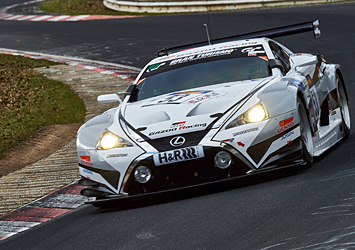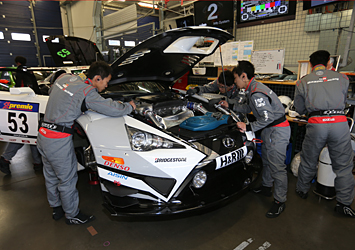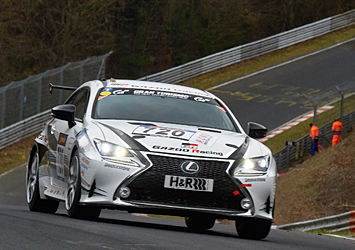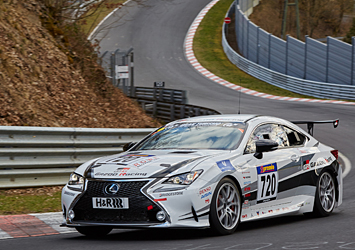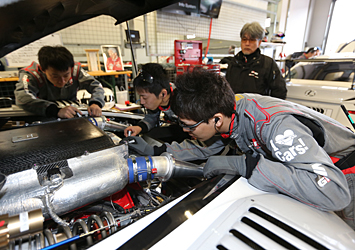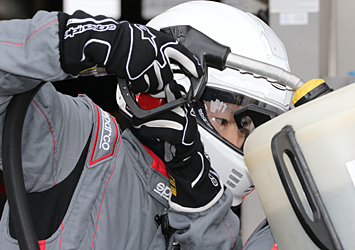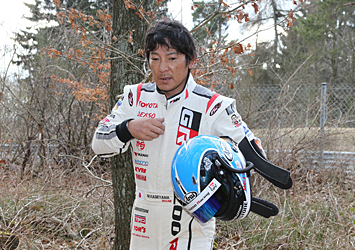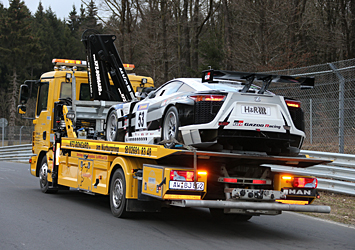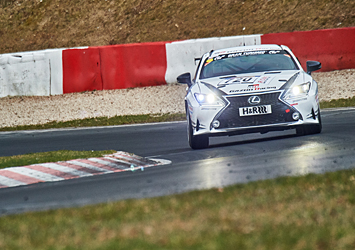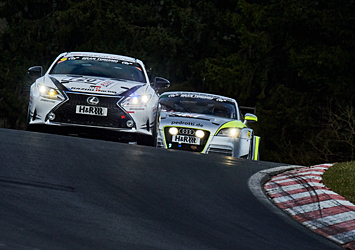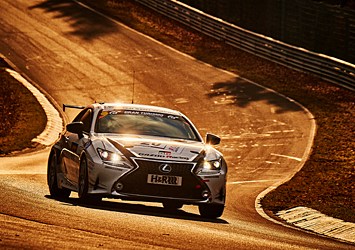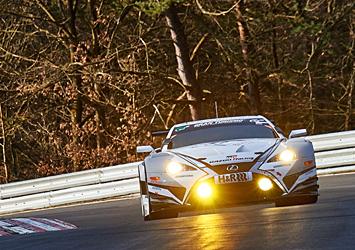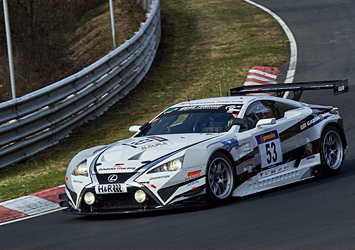After two days of testing at Fuji Speedway, the LFA Code X and the RC crossed the globe to Germany’s Nüburgring to take part in the first round of the VLN Endurance Championship (VLN1) on March 28, an important race in the lead-up to the 24 Hours Nüburgring.
The LFA Code X is a vehicle for future advanced development purposes that was entered at the 24 Hours Nürburgring in 2014. Despite participating for the first time, it placed eleventh overall and was top in the SP-PRO class. In response to driver requests, measures have since been taken to correct issues such as vibration, further increase body rigidity, make aerodynamic improvements, etc., creating an all-around updated body for the 2015 season.
In the Japanese shakedown test, one driver commented that he ‘sensed an evolution from the moment he got onboard. The body rigidity….is especially improved around the rear, making it faster and easier to handle. In terms of appearance it doesn’t look very different, but the aerodynamic performance at the front (downforce) has really improved.’ illustrating the major evolution that has taken place.
The RC, competing for the first time this year, is not greatly different from its base vehicle in visual terms. It is however being fitted with a 2.0-liter turbo engine for entry in the SP3T class, where the 24 Hours Nürburgring has a large field of entrants offering a vast amount of competition. The engine will face tough conditions in the Endurance race, but as with the LFA Code X, that is part of the challenge of developing next-generation technology.
At the Nürburgring, vertical impacts and jump landings with brakes locking up on all four wheels are just a few of the stresses unimaginable on Japanese circuits. Testing was carried out in Japan to try and establish the challenges the vehicles will have to respond to, and as a result a wide variety of response measures and adjustments were introduced, from detailed tweaks such as the loosening of bolts, to improvement of the aerodynamic performance.
In practice sessions before the VLN1, both vehicles had issues such as a lack of contact sensation with the road at the front of the vehicle. In addition, the LFA Code X had driveshaft trouble and ended up stopping during the second lap of the course. The RC experienced problems with the engine and brakes that had to be worked on till late into the night. In the qualifying round the LFA Code X had a vibration attack, but still managed to come in 52nd overall while the RC placed 128th overall. Adjustment of the propeller shaft was completed just as the pit lane closed for the finals.
In the finals, the LFA Code X and the RC had both overcome the difficulties they had faced in the heats and upped their overall positions with each lap. The RC showed a steady progression in performance, improving its lap time with each circuit. However, a crash occurred one hour after the race began in which a spectator was killed, leading to the race being red-flagged and bringing an end to what was supposed to be a four hour event.
Racing at the Nürburgring is an experience which tempers not only the vehicles, but also the people involved. For the mechanics, this was their first race since their participation was announced in January. The initial aim was for the team to get a feel for the race and how to play it. Managing to respond to issues within tight time limits, they turned in a pleasing performance that was above expectation. Nevertheless, there is still a large amount of room for improvement in terms of time and movement, and a daunting range of issues to be tackled. The task at hand is to set things up so that everyone can work out what it is they should be doing to contribute in the time available. As a number of mechanical issues have also been flagged, the team will be taking swift action so as to be in optimal condition for the VLN2 on April 25.
